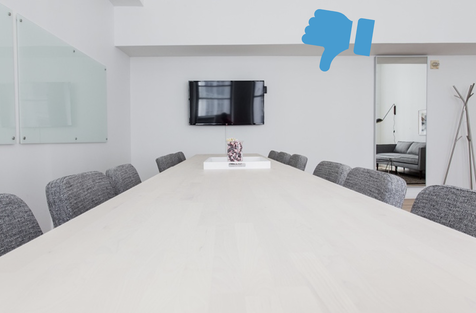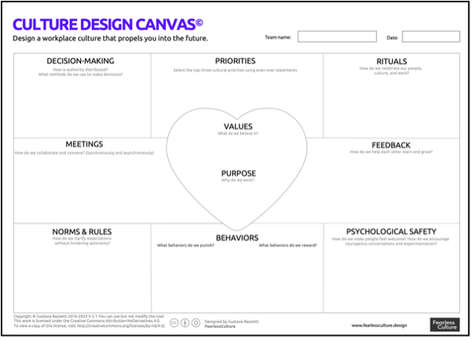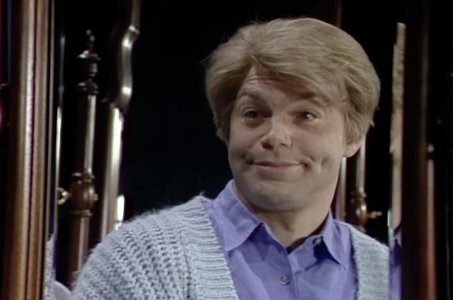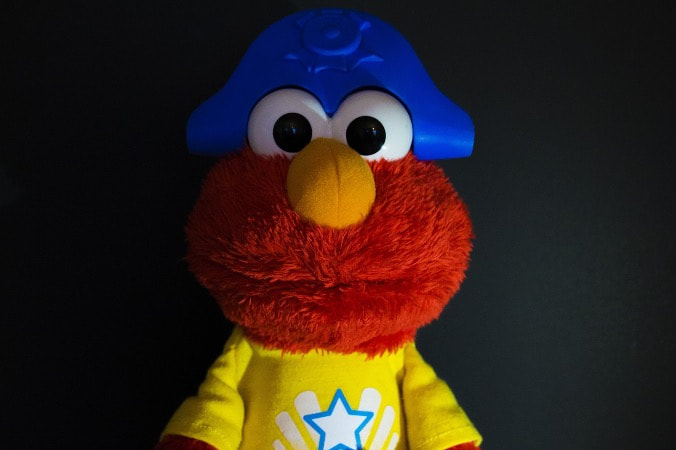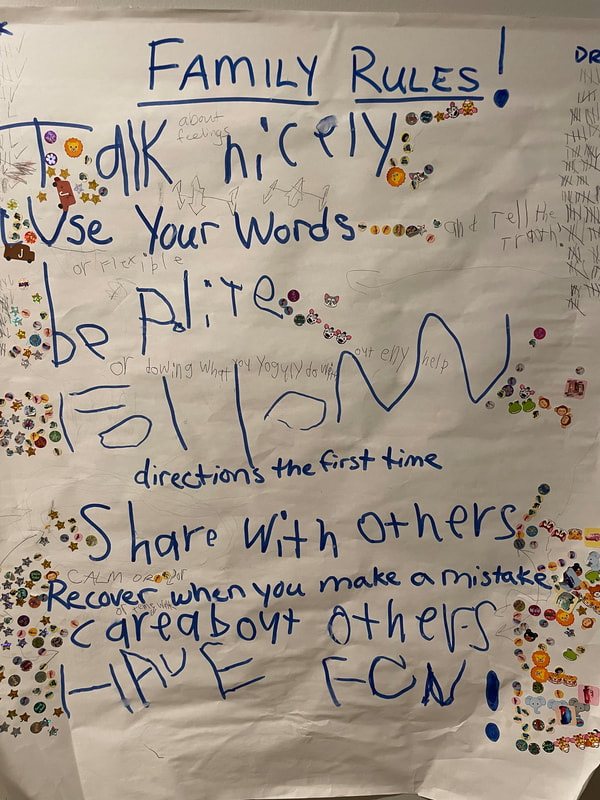|
Growing up has a few facets to it. Of course, there is physical growth which happens most notably during our first 20 years of life. From an intellectual standpoint, as we progress through school, we learn to think critically and manage large amounts of information. But what about emotional growth? It can be neglected. For most people, emotional intelligence does not develop unless you actively work on it—such as working with a psychologist or doing a lot of reading and exploration. As a coach, I find that a lot of wildly successful leaders need to work on emotional intelligence as part of their professional growth. For example, one of the toughest challenges in a stressful workplace is staying grounded when someone is pushing your buttons. A common conversation I have with coaching clients is about understanding your triggers.  At Book Club last month, we discussed the book Leading Lightly by Jody Michael. In the book, Michael presents strategies for increasing joy by becoming more mindful of your choices and by taking back control. (In case you missed it, head to the CliffsNotes Book Club portal to check out the fabulous notes and book summary that Katy O’Neill prepared.) Resources to build emotional intelligenceThe discussion was high-energy, and we shared related resources as the book sparked ideas and we connected them to other models, theories, and resources. Here are some more resources and methods that came up during the book club discussion…all worth exploring:
What resources help you manage your hot buttons?
0 Comments
When it comes to managing work through people, I have a shortcut formula I often reference in discussions with leaders. It’s just three things… Performance = Potential – Interference I learned this formula years ago from Tim Gallwey’s book, The Inner Game of Work. That is, a leader’s job is to maximize their employee’s potential and minimize the interference. What do we mean by minimize interference? Here are some examples:
It makes sense that so much of leading people is minimizing the interference, one roadblock at a time. But it never really occurred to me to introduce interference. This was the big “aha” for me when I read the book The Friction Project by Robert Sutton and Huggy Rao. At our Cliffs Notes Book Club this month, I discussed this book and explained the concept of “interference” as a form of friction. There are times to step on the gas (to reduce friction) and other times when you need to step on the brakes (to increase friction). What is Friction? The authors define friction as “the forces that make it harder, slower, more complicated, or downright impossible to get things done in an organization.” Friction is any force that makes it harder or more complicated to get work done. It’s the unnecessary steps in an inefficient process. In the workplace, it could appear as layers of approval, a clunky user interface in computer program, bureaucracy, or other barriers to entry. Examples of Good Friction We typically think about reducing friction as being a good thing, and it is. However, the authors also talk about good friction. They urge the reader to look around for situations in which you may benefit from adding friction. That is, there are times when it makes sense to slow things down. An example of good friction in a work setting is an IT protocol to make it hard for someone to hit ‘reply all’ to a large group email. Outside of work, there are examples where efficiency is not always the end-goal. For example, at a time when many stores are introducing self-checkouts, a chain of Dutch grocery stores initiated “slow lanes.” Customers who appreciate the discussions at the store, and the social interaction, welcome the friction. They enjoy shopping and chatting—and value this over the increased efficiency of self-checkout. Friction Forensics Questions The book provides a list of questions that are useful to help assess areas of friction. As with all decisions, there are trade-offs, and it’s wise to consider the effort versus possible impact/benefit of making a change. Here’s a set of questions to save, share, and refer to. Friction Forensics Questions adapted from The Friction Project
As a leader, how will you engage your team in identifying the good and bad friction? What steps will you take today to make use of these insights?
Imagine this scenario…Managers are not holding their people accountable. Deadlines are missed, requirements are not met, and performance is not up to par. You peel back the onion a bit and learn that information is not flowing, and trust is broken. Team members are not clear about what is in their control and under their authority. Leaders are not backing decisions made at the lower levels. It’s an all too common scenario that results in frustration and disengagement, yet it’s an oversimplification to say that people are not being held accountable for their actions. Accountability is a complex topic that requires some discussion. Creating a culture of accountabilityOne of the challenges for new and experienced leaders is setting the tone for a culture of accountability. That is, a team where people have the power and authority to work with autonomy, where individuals own their actions and decisions, and where everyone displays leadership, regardless of their level. In such a culture, everyone is responsible for outcomes—good or bad. A lot has been written about this topic, but I’d like to pile on with three things that stand out to me as effective ways to foster accountability and create a workplace that minimizes the “not it” moments. What the best leaders do to create a sense of ownership1. Become a Champion
After years of working with leaders and coaching executives, I have found that the leaders who successfully create a culture of accountability often position themselves as “champions.” These leaders not only advocate for their teams but also provide air cover and take responsibility regardless of the outcome. The biggest gift a leader can give their team is air cover. If you set out to empower your team and push down decision-making, the team must know that they have the autonomy to conduct their work and that they have your support on any decisions they make. How to communicate this? Frequently message, “I got your back,” and mean it. 2. Focus on Ownership Gustavo Razzetti recommends shifting the narrative away from accountability. In this article, Razzetti makes the case for shifting from focusing on who is accountable, to acknowledging ownership. He argues that ownership is intrinsically motivated, purpose-driven, and rewarding. An organization that has a culture of ownership cultivates pride and motivation. The shift from accountability to ownership is a subtle change with powerful outcomes. 3. Emphasize Shared Success At a recent CliffsNotes Book Club meeting, we discussed Accountable Leaders by Vince Molinaro. (If you missed it, head to the portal and check out the fabulous notes Jeff Fetterman prepared.) Molinaro outlines how to drive accountability in great detail. In the book, he shares four strategies: 1. Make leadership accountability a priority 2. Define leadership expectations 3. Build the resilience and resolve of those you lead 4. Help others succeed across the broader organization The fourth item—helping others succeed—is a refreshing and insightful aspect of accountability, and it relates to the community element of this cultural norm. Focusing on the combined success of the organization is a great way to build community and emphasize shared ownership for collaborative efforts and handoffs, including those transition points where something can slip through the cracks. What has been your experience with fostering ownership? What has worked for you?  We have all heard it (maybe said it) a thousand times: People don’t leave jobs; they leave managers. The manager + direct report relationship is fundamental to your experience in any job. Margaret Wheatley talks about leaders’ having the power to create “islands of sanity”… Wheatley defines these islands in her 2023 book, Who Do We Choose to Be? Facing Reality, Claiming Leadership, Restoring Sanity. Wheatley challenges us “to create the conditions, both internally and within our sphere of influence, where sanity prevails, where people can recall and practice the best human qualities of generosity, caring, creativity, and community.” She urges leaders to use their powers for good—to create the spaces of refuge at work and beyond. We explored the concepts of in this book at our CliffsNotes Book Club in April (check out the notes on the portal for more details from the book). The discussion really resonated, and I began to think about the islands I have witnessed, been part of, and created. Islands of Sanity – Extraordinary Organizations There are a few exceptional and extraordinary examples of entire organizations that seem to make their own rules, and are functioning as islands of sanity. The Motley Fool financial advisory, whose motto is “Making the world smarter, happier, and richer,” is consistently rated among the best financial advisors. Their model is to democratize financial advice, and their employees enjoy flexibility and generous benefits. What’s more, they set up a foundation to support “social innovation” in the space of helping people get out of the cycle of living paycheck to paycheck. The book Beloved Economies by Jess Rimington and Joanna Levitt Cea presents many other remarkable examples. The core premise of the book is that the current economy focuses on financial profits and sucks us dry, such that we have no time, energy, or resources to enjoy life. In the book, the authors pose the question, If you work in a company where you trust your employees and treat them with respect, how would you design the systems differently? They share examples of organizations that truly put people first, and that are successful regardless (or because of it…). One example from the book is Creative Reaction Lab. They facilitate customized learning experiences using equity-centered community design. Also, PUSH Buffalo (PUSH = People United for Sustainable Housing), a community organization that has been mobilizing residents to create strong neighborhoods with quality affordable housing and greater local hiring opportunities. Another fabulous example is Dan Purvis, founder of Velentium. It’s impressive how intentional and thoughtful Purvis was about designing the company culture. A guiding principle was to be “principles heavy and rules light,” or “more like soccer than football.” Purvis knew that the company could not be innovative and nimble if weighed down by overly cumbersome rules. He managed to stay true to this rule even in a space like medical devices, where documentation and regulation are rigorous. (See my blog on this great company.) Islands of Sanity – Extraordinary Leaders While there are a few examples of entire orgs as “islands, I am certain many of us have seen or been part of islands as “pockets” inside bigger organizations. The secret behind these? Leaders who make it possible. Wheatley talks about the sphere of influence of an individual leader and encourages us to leverage it. The key is to ask yourself, “What is in your control?”
How can you show up as a leader and create your own island? Here are some practical ideas:
What islands of sanity have you been part of? If you have created one, how did you make it work? Just when you think we have talked enough about remote work, I have some ideas to pile on. Our March CliffsNotes Book Club discussion was on the book Remote, Not Distant by Gustavo Razzetti. (Many thanks to Mary Power for leading the lively, info-packed discussion! If you missed it, check out the notes on the portal.) Razzetti sparked some interesting ideas, in particular discussions of mindset shifts. That is, for years we have been thinking about “workplace” and “office” with a specific frame. It’s time to shift our thinking. Remote, Not Distant – Key Takeaways Virtual First. Remember a few years back when smart phones were starting to win us over? If you designed a website at that time, someone who was more tech savvy would nudge you and say, “Remember, mobile first!” It was a reminder to ensure that the interface you were designing would work well on a smaller screen. Now, just a decade later, it’s second nature, right? Well, Razzetti urges us to make a similar mindset shift as it relates to designing meetings, etc. He calls for a “virtual first” mindset. That is, design with virtual in mind first, regardless of whether you are virtual or hybrid. Rethink the Purpose of an Office. If you have spent decades “going to the office” for work, you likely have a set idea of what “office” looks like, and how it’s used. I am thinking about things such as what activities take place there, what time of day it’s active, and who participates, etc. Razzetti urges us to rethink that. All of that! If an office is purely for collaboration versus for getting everything work-related done, what would the space need to look like? How would you redesign it, and what opportunities does that open up for your organization? As part of this, Razzetti talks about the need to clarify which arrangements the company is going to make and where flexibility is allowed. Razzetti urges teams, not individual leaders, to think through and plan out all the details. Bring Together Ideas, not Bodies. Another mindset shift is related to how we get work done through and with others. For Razzetti, collaboration is about an exchange of ideas, not a meeting of people. If you focus on the flow of ideas, you may realize that being co-located is not necessarily required. Razzetti advises that the first step is often to look at your current workflows. Examine how is work getting done now, then redesign your processes. How Do We Get There? Razzetti’s Culture Design Canvas© is an amazing tool to guide a team or organization in reimagining the workplace. The center is the starting point. First, define your purpose and outline your values. Then, begin to design the remaining elements. Visit Razzetti’s "Fearless Culture" website for more downloads and resources.
As always, let me know what ideas this sparks!  Given that many of our friends and neighbors have teenage children, this is the time of year when we are talking a lot about college admissions. It’s high stress and high stakes, whether walking the dog or watching a high school sports game. For so many young people, so much seems to be hinging on what your top choices are, and where you get in. The school decision, and so many others, is about status and achievement versus the joy of learning. How did we get here? At our February CliffsNotes Book Club discussion, Brenda Martineau presented highlights from the book Never Enough by Jennifer Breheny Wallace. The book talks about a “toxic achievement culture” that is taking over our kids’ and parents’ lives. In a society where the pressure to perform is deeply embedded in schools, sports, and beyond, how can we teach our kids to strive towards excellence without crushing them? (If you missed book club, check the book club portal for the notes.) The author puts forward a seemingly simple answer. That is, children need to feel they matter, and they must feel intrinsic self-worth that is not dependent on external achievements. What’s the role of parents, teachers, and trusted adults? When they make children feel they matter, children see themselves as valuable contributors and important parts of the community. That’s when kids thrive. And, frankly, that’s when any one of us thrives. I have been reflecting on these same challenges, and over the years, you’ve heard me talk about leadership at work and beyond. At Mendelow Consulting Group (MCG), we believe leadership skills go way beyond the office walls and spill into all domains of life—with family, neighbors, and the community. MCG’s Group Dynamic Engagement Model™ supports leaders in the workplace and parents at home. Per the model, to feel engaged, you must feel Connected, Valued, and Empowered. The model represents engagement at work and beyond. In working with executives in the boardroom and parents tackling the morning routine, we have found that the model holds true in both domains. Here are a few brief examples... Dynamic Engagement at Work and BeyondThe Dynamic Engagement Model™ focuses on three psychological needs that are necessary for a team or family to feel engaged. Feeling Connected Establishing clear values both at home and in the workplace is one of the fundamental strategies to establish a strong connection with a team or family. In both environments, there may be unwritten rules of engagement. We encourage you to make those unwritten rules explicit and then acknowledge each other when you see the values in action. For example, in the home, a value may be that we look out for each other. Maybe you notice that your child goes into the cupboard and gets a snack for themselves and then offers their sibling a snack as well. That is a small sign of caring for others and, as the parent, you can verbally say, “I noticed when you got a snack this afternoon, you also got one for your brother. That shows me that you’re looking out for others.” In the workplace, you may have a value around honesty. In a meeting, a team member may push back on some of your ideas, even though you may be the project lead. Instead of pushing back even harder, acknowledge the courage it took to share an opposing view and thank the person for allowing the team to consider the potential risks. Feeling Valued Feeling valued is about the person feeling that they’re making a difference. In the workplace and at home, it’s important to clarify the strengths each person brings to the table and the roles they play. At home, you may notice that one person in your family is super organized and they help keep the family on schedule. Whereas, someone else is always cracking jokes, and they add humor and lightness to the family. At work, you have the formal roles, but you also have the roles people fall into. For example, you may have someone who is an excellent storyteller and they often help to shape presentations to tell compelling stories to your client. When people feel that their strengths are not only recognized but being leveraged, they feel a sense of accomplishment and fulfillment. Feeling Empowered At work and beyond, people feel empowered when they have choices and autonomy to make decisions, based on certain principles versus a firm set of rules. At home, with young children, feeling empowered may involve a short set of choices to make decisions or options to pack in a lunch. With older children, it may involve being part of family decisions, or negotiating a curfew. At work, employees want the ability to manage a project from beginning to end and feel the sense of pride and accomplishment once it’s completed. As the leader, you may provide the criteria and vision, but then allow the employee to determine the approach. Pulling it All TogetherThere is an art of creating a culture of engagement at work and at home, and it’s dynamic. At any given time, you may need to focus on one or more of these psychological needs. As a leader, at home or work, you also want to recognize how to address these needs, so you don’t accidentally over-accommodate or sacrifice your own needs. You want to accommodate and stand your ground; you want to be flexible and also have boundaries in place.
When it’s a well-oiled machine, you will find that those around you are more committed, more creative, and more fulfilled. That’s big-picture engagement. I know many of you are thinking about these same issues, so please send us your best practices. I’m curious to hear what strategies you employ to create that culture of engagement either at work or at home. 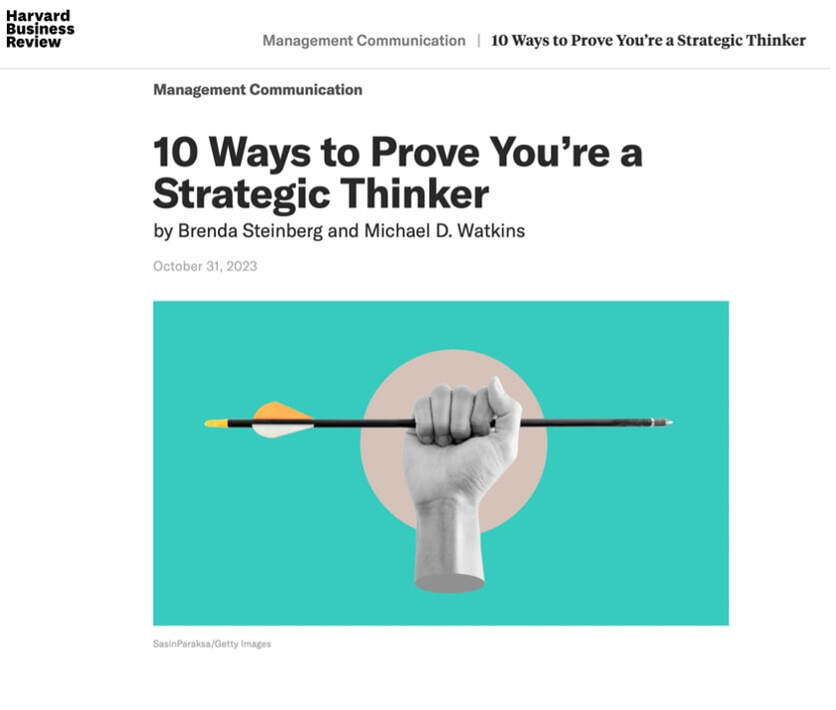 Years ago, I read an article that suggested that, in order to be the smartest person in the room, you had to do only one thing...listen! They argued that simply paying attention to the conversation in a meeting gives you a leg up over all the other great minds in the room. Years later, I find it’s true. Given the temptation to multitask and the distractions that we all face during the workday, it’s no wonder that paying attention is now a special skill that requires discipline—and that stands out. I was thinking about the importance of listening (fully) in a meeting as I read this fabulous HBR article “10 Ways to Prove You’re a Strategic Thinker,” by Brenda Steinberg and Michael D. Watkins. The article stands out because it’s a practical breakdown of behaviors and actions that define what it means to “be strategic,” a concept which can sometimes be squishy. The authors talk about both thinking strategically and the related skill, communicating. As an organization development consultant and executive coach, I have worked with leaders for more than 20 years. I find that, to many people, being strategic means drawing a strategy on a slide. Well, yes and…there’s a lot more to it. The article outlines specific ways to be a strategic thinker and communicator. For example, demonstrating that you are informed, building on ideas, and connecting the dots between ideas. If you are at the director or division-lead level, for example, paying attention to the broader discussion across your organization, and becoming informed on other groups’ activities and plans is what you need to develop an enterprise-wide view. That’s the big-picture. Leading your Team vs. Leading with your Peers As an executive coach, I find that many of the leaders I work with excel when it comes to leading their teams. In preparation for a team event or meeting, they actively engage, plan out talking points, and block time to ensure they minimize distractions. They show up. They listen fully and are able to ask those great “look ahead” questions, map ideas to the strategy, and engage the group. When it comes to gatherings of peers, however, these same leaders may not prepare as much. They may allow their minds to drift if a peer is briefing on another area of the business, or they may send a delegate if they are double booked. In some cases, they don't even show up. What’s the perception with their peers? It could be a view of a leader who is unprepared, siloed, not totally present… Their peers don’t see the strategic thinking in action. Why is this so important? Besides the fact that you’re missing opportunities to collaborate and provide more value to the organization, from a personal development perspective, if your desire is to be promoted, peer feedback and adding value at the peer level is critical. If your cohort doesn’t feel that you’re ready to move up, you will likely not be promoted regardless of how well you manage your own team and projects. We typical say that early in your leadership career, you’re looking up and down, but as you grow, it’s critical to look up and out. How to Make the Shift
As the article outlines, being strategic starts with the small efforts. Little things like preparing in advance for a meeting by reading the presentation materials, and getting curious about other people’s work, is what it’s all about. Connecting the dots could be as simple as pointing out interconnections or cause/effect outcomes across groups. Another strategy with peers is to offer support. “How can I help?” is a powerful invitation to a colleague who has just escalated a risk to the organization or who is stuck on a challenge. Of course, you want to be careful not to overly commit yourself but some simple strategies like asking a powerful question of a colleague about work that has little to no impact on your area, is a powerful value-add and will position you as a strategic thinker. What are some simple ways you can shift your engagement and contribute at your peer level? We spend a lot of time taking photos and videos of life’s moments—from documenting our meals to vacation selfies, our phones hold a lot of memories. The pictures and images we record help us remember what happened. But what helps us learn from it? The strategy I use is to make time for reflection. As a practice, I try to do a little reflection at the end of the week, when a project or client engagement ends, and at the end of the year. Spending a little time looking back helps me celebrate my successes and learn how to fail forward. It also helps me remember the great ideas—those aha moments that are big and powerful, but that can get lost over time. Trying to take my own advice, I looked back at my 2023 blogs. I stood back and squinted my eyes a little to see what really popped. No surprise, much of it happened thanks to the CliffsNotes Book Club discussions (visit the portal for the schedule and book summaries). Having a regular injection of ideas, and great discussion with fellow coaches and OD consultants is always a highlight for me. Here’s my ‘Lucky Seven” list: Laura's Lucky Seven of 2023
Thanks for letting me share my “lucky seven.” Let me know what ideas this sparks, and what strategies you’re looking to implement for 2024. A World Without EmailIf email is not working for us, why are we working so hard to work around it? This thought honestly never occurred to me before reading the book, A World Without Email by Cal Newport (Many thanks Carla Dancy Smith for co-leading last month’s book discussion on this and creating the discussion notes.) And, it’s so true, I’ve come up with email folders, filters, rules, automatic responses, etc., just to stay on top of this never-ending stream of communication... The book club discussion triggered my thinking about what we can do now to make email work for us. You may not be in a position to eliminate it entirely (although, some organizations have, believe it or not) but I challenge you to thoughtfully design another way to operate…or a way to love the one we’re with. Making Email Work for Us: A Few Tips
I hope this short list gets you thinking…and do let me know what works for you, as you rethink how email can work for us! “I’m good enough, I’m smart enough, and doggone it, people like me”… right? This famous line from Saturday Night Live’s “Daily Affirmations by Stuart Smalley” skit makes light of the self-doubt that many people experience. Joking aside, as a coach, I have worked with many accomplished leaders who experience this and wanted to share some of the key themes and strategies to help turn it around. What is Imposter Syndrome?In 1978, psychologists Suzanne Imes and Pauline Rose Clance first wrote about “imposter syndrome.” They observed it among high achievers who, despite accolades and credentials, felt they may, at any point, be unmasked as frauds. The topic came up in our CliffsNotes Book Club discussion last month as we discussed She Thinks Like a Boss by Jenna Roedel (if you missed it, head to the portal to check out the fabulous notes Brenda Martineau prepared). This discussion led me to think about sharing the strategies I have put forward with executives who have experienced it. Imposter Syndrome/Phenomenon – Key Takeaways and Strategies
As always, pile on your thoughts on the topic! I love to hear what ideas this sparks for you. 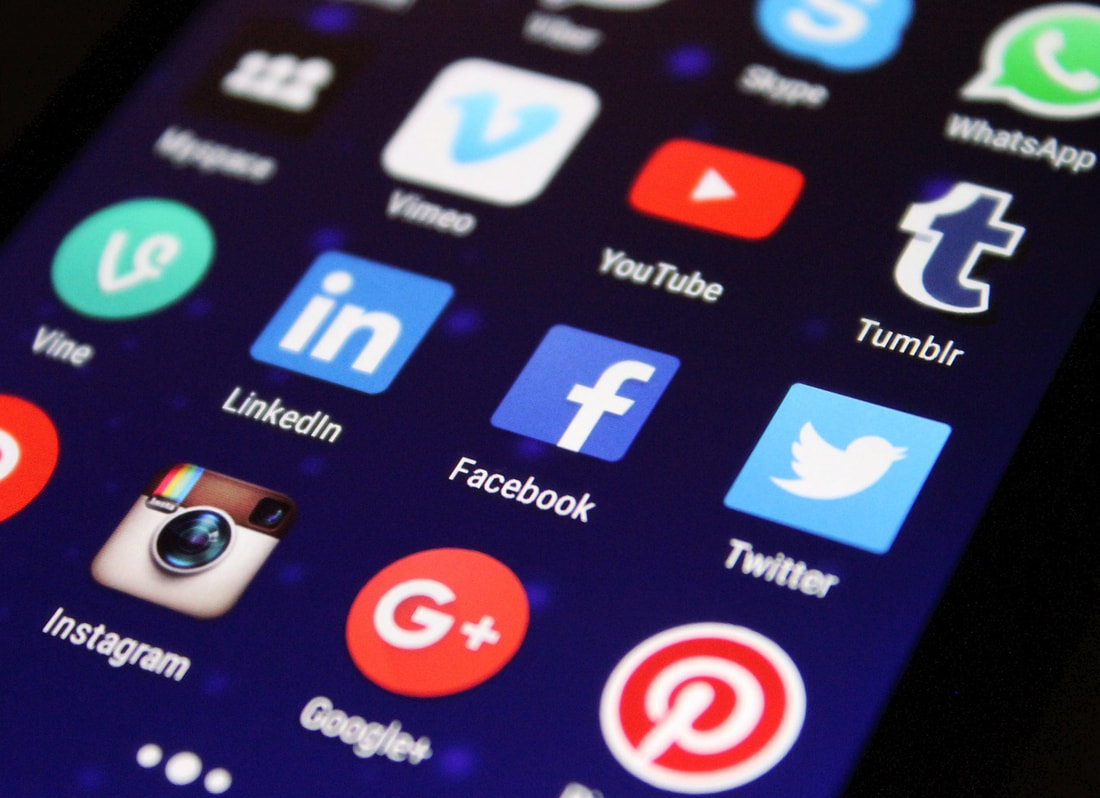 At last month’s CliffsNotes Book Club discussion, we explored strategies and tips for navigating career changes. Our facilitator for the month, Paula Brand, led a fabulous discussion and shared a lot of context from her experience as a career coach. (If you missed it, check out the portal for Paula’s notes.) My “aha!” moment as I followed along was that career changes have a special way of pushing people out of their comfort zones! In particular as it relates to networking, many people hesitate to be proactive—or put it off for too long—because it’s simply too uncomfortable. I wanted to share a few strategies I have worked through with coaching clients over the years…that will help reframe the challenges. Networking for Career Success Challenge #1: It’s been a while since you connected with someone, and you hesitate to get back in touch. Keeping up your professional network is a must, but for a number of reasons you may find yourself in a situation where you have not been in touch with your key “career success” people in a while. Perhaps you changed jobs, they moved, or you left a mutual group where you would regularly interact. The reframe: Remember a relationship goes two ways. Asking someone for time to talk can feel like an imposition, especially if you have not been in touch in a while. But remember that it is highly likely that they will also benefit from talking with you. When you reach out, be open about what you are asking for, and also offer to support them. This reframe can alleviate some of your discomfort and make the discussion feel more ‘give and take,’ and balanced. Challenge #2: You cringe at the thought of bragging about yourself. It can be uncomfortable to many to openly speak about accomplishments, skills, expertise, or credentials. Even if you are proud of your background, talking about it so as to ‘sell’ it can be hard. The reframe: Put the spotlight on the organization. In an interview, focus on the organization rather than your experience or background. Lead with what you appreciate about the organization and how your particular expertise could support/further their efforts. This allows you to share your success stories and skills in the context of enhancing the organization. Challenge #3: You need to talk to strangers. Often times, expanding your network involves connecting with new people. For many, this means being "on.” It can be particularly draining and anxiety-inducing! The reframe: Set goals for yourself and network with purpose. Networking goals can help remind you of the purpose and your desired outcomes. You’ll find it’s not about quantity (e.g., reaching out to everyone), it’s about quality (e.g., identifying a few key people you can make meaningful connections with). First set clear goals on what you are trying to achieve, then seek out people who can help you gain clarity on them. Instead of filling your calendar with coffee chats, this will help you engage in purposeful discussions with a wide variety of people. What networking challenges have you faced, and how have you overcome them? Networking to make a career change? Don't miss these resources:
If I asked you to write down the rules and norms for your household, it may take some reflection to generate a robust list. Yet, one shortcut is to observe a child in action. When learning their way in life, children make a lot of missteps. From “Don’t put that in your mouth” to “We don’t look in other people’s purses,” listening to what a child is being corrected for can signal the long-established group norms. In many cases, these “broken rules” are things you would not think to articulate—that is, until a child enters the picture! In the workplace, it may take some discussion to reflect on and develop a list, but it’s well worth the effort. Spoiler alert: One of my favorite Group Agreements is to use an Elmo doll in meetings. "ELMO" stands for "Enough, let's move on." You can throw Elmo or just show a key-chain size Elmo on a virtual meeting, and everyone gets the message in a playful way. What are Group Agreements? Group Agreements are norms and guidelines that explicitly state the unwritten rules of how your team agrees to interact. They work best when discussed, formally written down, and kept in a prominent place. What’s more, they are a living document that needs to be adjusted as the team grows. It’s important to dust them off, review them, and discuss them periodically. People often ask me what is the secret to a high-performing team, and establishing these norms is a tactic I have seen be very successful in many different types of settings. Known by many names including “group charter,” agreements are a set of expectations that you (or others) can refer back to and reinforce to optimize interpersonal and team dynamics and address issues that may occur. They create psychological safety—a safe space for conversation that allows people to be more honest and forthcoming. How to use Group AgreementsWhy are Group Agreements so helpful to leaders? Imagine leading a team that includes a team member who is a challenge. She’s extremely intelligent and follows the rules, but she shows up as defensive in meetings. Her presence has a negative impact on team dynamics. Yet, it’s hard to give her feedback against a specific skill area or core value because she’s a great performer. However, if you have agreements in place, you can refer to them. For example, some teams include in their agreements Steven Covey's rule, "Seek first to understand then be understood." In a feedback conversation, you can frame your observation in terms of this agreement. Like competencies and core values, the agreements are something tangible to refer to during feedback conversations. Group Agreements: At Work and Beyond If you know me, you know my motto, “Leadership at work and beyond.” The skills we develop as leaders are transferrable to many settings outside of the workplace, including the home. With some tweaks, e.g., display on the refrigerator door vs. on a PowerPoint, you can leverage agreements for your family. One day when my boys were young, I came home from facilitating a workshop and had all my supplies in tow. I was holding flip chart paper with the words “Ground Rules” at the top. My oldest son who loved structure asked about this and was curious what I was doing creating rules with people I work with. I explained to him that we established the rules of how we want to work together before we start a workshop. He immediately then asked, “Can we do rules for our family?” Of course! Why didn’t I think of that? So, that week we sat down and came up with our family rules that included “Talk nicely,” “Recover when you make a mistake,” and “Care about others.” These rules reflected how we wanted and expected to interact with each other as a family. My husband and I always had these expectations, but we never thought to discuss them with our kids and write them out. We selected some rules that we knew our boys needed to work on and some that we were already doing well. The rules applied to everyone, not only the kids. We created “Spy Journals” and everyone was asked to spy on each other during the day to catch others living out the family rules. If you saw something, you wrote it down on a piece of paper and then we read them to each other before bedtime. We would describe the behavior and what rule it aligned to. One time I remember writing, “I saw Jack get an extra bowl for Drew during breakfast, and that shows he cares about others.” Instead of empty praise or kudos, we wrote down what we actually saw and connected the dots to the family rules. Although agreements are helpful when having to give constructive feedback, they work best when you “catch others doing something right” and this applies at home or at work. Agreements should not be used to shame or punish others, but rather leveraged to reinforce the positive behaviors you want to see repeated. How to Get StartedWhile it works best to establish the norms early on as a group is forming, you can also introduce the concept after a team is established. The important thing to remember is that the agreements surface through discussion and input. To gain buy-in, they cannot be imposed by the organization or a leader.
I often work with groups in designing norms and have jotted down some common agreements that work for many groups. If you decide to work with your team to establish them, you could refer to these and see what resonates. Then edit, add, delete as needed. Group Agreements – Examples
Agreements for Virtual Teams
If you have experience with Group Agreements, drop me a line below to let me know what unique guidelines you have established, and how they have helped your team!  Many of the leaders I support are working hard to increase their intentional focus on supporting Diversity, Equity, Inclusion & Accessibility (DEIA) efforts in their organizations. They are personally dedicated to making their own workplaces more inclusive. This is a wonderful goal! However, as it relates to collaboration at work, many leaders tell me they now err on the side of reaching out to more people, inviting more input, and ensuring broader stakeholder engagement. And…their managers are inviting them to more meetings and discussions, too. There is a point at which this level of collaboration is “too much.” Our inboxes are pinging, and our calendars are screaming! Author and researcher Rob Cross has looked closely at trends in collaboration at work and he tells us that, over the past decade or so, the time we spend on email/chat and in meetings has increased by roughly 50 percent. In his book Beyond Collaboration Overload, he makes the case that all this increased collaboration with colleagues is not necessarily adding value. And it’s causing overwhelm! (For more on the book, check out the discussion notes from the July CliffsNotes Book Club.) So, how do we get a handle on collaboration while also being inclusive? Examining the Polarity: Inclusive vs. FocusedWhen considering the “best way” to do collaboration, it’s helpful to consider the polarities, or seemingly opposing forces, at play. On the one hand, you wish to be inclusive, on the other, focused. After all, you do not want to overwhelm your colleagues or engage so many people that you’re hogging resources unnecessarily. In thinking about collaborating with colleagues to get input on your work, you may want to both include a diverse group of perspectives and engage those who have the closest expertise or most stakeholder interest. There are upsides and downsides to both sides of the polarity, and ideally you will find a way to maximize both. Take a look at the polarity map, and consider the dynamic... Three Tips for Effective CollaborationHere are some tips to keep in mind as it relates to effective collaboration:
Plan your list of attendees. This may seem obvious, but at the moment of hitting “send” on a meeting invite, you may wish to quickly complete the task and be done with it. It’s important to pause and reflect before issuing an invite, especially if you have more than three attendees listed. Take a moment to think about the purpose for your collaboration, and who will help you get to the desired outcome. Write two lists.
Make the invitation an option, not an obligation. I recently saw a meme that said, “It’s okay to say ‘no’ even if you are not already booked.” In the workplace, it can be especially hard to say “no,” and many workplaces have the practice of sending delegates to meetings. While this practice can be hard-wired into the culture of the organization, as a leader you can set the tone for allowing people to opt out. Taking the extra step to reach out and ask people personally how they will engage on a topic, sharing a RASCI if you have one (i.e., “Do these roles look right?”), and laying out the plan for communicating any decisions, etc., will help all “invited” attendees decide how best to collaborate. Protect your “go to” people. Every good leader has a team of people who you are quick to reach to. You work well with them, they “get” you, and you know they will deliver. When considering who you regularly collaborate with, take care to protect them and ensure you are not burning them out. Everyone wants to feel appreciated and needed, but over-collaboration is a real risk. What tips would you add? 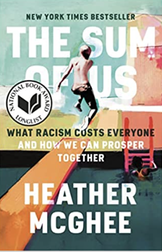 Be honest with yourself. Think about advancing in your organization. What’s your mindset, is it, ‘every person for themselves’ or ‘we’re all in this together?’ This is often referred to as an abundance/scarcity mindset. Where do these mindsets come from? During our CliffsNotes book club discussion on The Sum of Us: What Racism Costs Everyone and How We Can Prosper, by Heather McGhee, we examined this mindset through the lens of racism in America. (Many thanks to Kari Uman for facilitating!) The author approaches the discussion of racism not as a sociologist or anthropologist, but as…an economist! The Cost of Racism McGhee frames the discussion on the cost of racism on people of color and white people alike. For example, one observation McGhee makes is how the zero-sum paradigm is at play in racism in the U.S. Zero-sum is the notion that when one group wins, another loses. She shares numerous examples of how public benefits have been lost in recent decades. One compelling example is that of city swimming pools. In the 1950s, public pools were required to desegregate. In response, many communities chose to close the pools rather than open them up to all. As a result, many communities lost the benefit entirely. In their place, private pools opened, which are a benefit only to those who can afford the cost of entry/membership. So, imagine for a moment, you were child who grew up in a lower socio-economic neighborhood and experienced services either taken away from you or not even offered to you in the first place. Perhaps your parents applied for a loan to launch a new business or buy a house, but were denied over and over again. What might be your worldview as you grow up? For people who have not benefitted from abundance—people who have been treated poorly or less than for most of their lives—it is common to see a scarcity mindset show up in how they engage as leaders. This scarcity mindset may help you with being driven to succeed, but you will likely hit a wall once you move into a leadership role. (For more on abundance vs. scarcity, listen to this May 2023 episode of Freakonomics radio.) Why Leaders with an abundance mindset thriveFor leaders, an abundance mindset puts you in a posture of openness. Leaders with an abundance mindset look for win-win situations, trust others’ intent, and support creative solutions. From a people development standpoint, they build people up. Leaders with an abundance mindset joyfully share kudos and create opportunities for others to grow in their careers, etc. Their actions permeate the workplace culture and positively impact engagement overall. The question we raised in the book club discussion, is how do we help leaders who may have grown up feeling “lesser than,” for whatever reason, to help them adopt an abundance mindset? Case Study: Shifting from scarcity to abundanceIn working with leaders especially in coaching relationships, I invest time up front to understand where people are coming from. One of my introductory questions is, “What are the defining moments that have shaped who you are as a leader?” It is a question that leads to reflections on upbringing, early family life, dynamics at school, etc. One executive I supported a few years back came across as having a chip on his shoulder. He felt he always needed to prove himself, despite the fact that he was brilliant and had all the credentials and experience needed for his role. At his core, he felt he was never good enough. In getting to know him, I learned that he came from a family environment where his basic needs were not met. His family was poor and food insecure much of his childhood and adolescence. As an adult, he created a barrier with his team and peers. To help him make the shift from scarcity to abundance, I asked him to focus on two things:
Over time, his reputation shifted. He became known as someone who was collaborative, supportive, and inclusive. He built some strong relationships and truly connected with team members. His mindset shifted as did perceptions of him. Learn MoreRacism in America is a topic where continuous learning is needed. At Book Club, the group shared their most helpful resources for going deeper into racism and social injustice. We also updated our resources list, originally created in 2020. Check out the newly-added resources below.
WATCH
LISTEN
READ
DO/VISIT
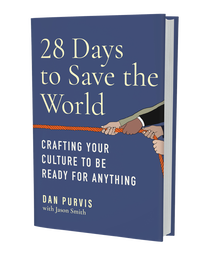 In 2012, Dan Purvis was busy building a medical-device business. It would be called “Velentium,” which is a combination of the words velocity, momentum, and talent. It’s not just the name that’s creative. From the start, Purvis was also carefully and intentionally designing the culture. The business reason for existing was to support the development of medical devices but the human reason was deeper. In four words, Purvis describes it as: “culture-forward, family first.” Over the past decade, he’s succeeded in growing the company with intention, and—what’s more—the company played a critical role during the COVID-19 pandemic. As he describes in 28 Days to Save the World: Crafting Your Culture to Be Ready for Anything, co-authored with Jason Smith, Velentium, in partnership with their client Ventec Life Systems, successfully increased production from 100 units of ventilators per month—to 10,000 per month.
Today, the company continues to boom, and they have not lost sight of their aspirations for a people-centered culture. When Purvis talks about the vision to grow to 1000 employees, you will hear him say that the company will “include 1000 families.” Families, not employees, because the whole person is at the heart of every decision. With every business decision, he acknowledges that each employee has many dimensions and roles in life, and the ‘career’ part is just one… At this past month’s CliffsNotes Book Club, we had the honor of hosting Purvis and Smith. It was one of those meetings that gives you goosebumps and fills your notebook with ideas. I encourage you to read the book, but in the spirit of the CliffsNotes Book Club, where we pass notes to our besties, here are some of my takeaways from the discussion.
And that’s just the CliffsNotes, folks! Check out the book and head to the portal for the presentation notes. As you watch a professional tennis player preparing to receive a serve, you’ll notice they are in constant motion. Knees bent, they stay on the balls of their feet, shuffling, ready to react swiftly to a serve coming at them at 100+ mph. As we think about what the future is about to serve us, what does that ready stance look like? And what does resilience look like? The book Imaginable by Jane McGonigal presents an approach for “How to See the Future Coming and Feel Ready for Anything―Even Things That Seem Impossible Today.” It’s the mental equivalent of shuffling on the balls of your feet, leaning in, eye on the ball…This book was the feature at our CliffsNotes Book Club meeting in April, and we had a great discussion about how future-thinking leads to a higher level of resilience. (Thanks again to Cate Rodman our fabulous facilitator! For Cate’s notes, visit the portal.) What’s more, it is not simply about imagining what the future may hold, but also about promoting actions today to influence a possible future. In the book, McGonigal gives us the tools to help shape the world we want to live in. First off, why even bother about thinking about the future?In the book, McGonigal explains that imagining the future is a tool that gets you out of rational thinking and puts you into a more creative space. And we can train the brain to do this—to imagine what is un-imaginable, and to think what is un-think able. The neuroscience is fascinating. As an fMRI scan shows, a different part of the brain is activated when you think about one year from now versus the distant future—e.g., envisioning a scenario 10-years from now. In our book club meeting, we opened the discussion by sharing one thing that is true about our lives today that ten years ago we would not have imagined. It’s a powerful question to engage a group and demonstrate that we don’t always know what the future will look like. This encourages people to dream about the future to come and be open to potentially crazy ideas or new realities. Afterall, if a crazy reality came true in the past, then why wouldn’t that be possible in the future? It reminded me of the famous quote from Henry Ford. When asked about customer input, Ford once said, "If I had asked people what they wanted, they would have said faster horses." As was the case for Ford’s customers, they could only imagine more of what they already had for transportation. It wasn’t in their realm of possibility yet to image an automobile. When you are able to tap into the power of your imagination, you open up new possibilities and new realities. How does this benefit leaders? In the workplace, it is a skillset that is not just useful for risk management or scenario planning, it’s also a leadership mindset that leads to openness. Looking ahead allows you to be open to multiple perspectives, to juggle options more freely, and possibly to allow you to let go of your own agenda or deeply-held beliefs. The act of imagining can open you up to new, and possibly better ideas. It can also help you connect with people who are different, and it can help lessen your fear of the unknown. Using technology to facilitate the imaginingAt book club, Cate led us through an exercise using Chat GPT to help us do some creative future thinking. She posed some questions and let AI generate some fun responses. We asked ‘what if’ questions such as, “What would happen in a world where there are no more trees?” It was a fun way to use technology to get us out of rational and grounded thinking, and it pushed our thinking to be more creative. Imagining an impossible (or ridiculous) scenario can help you see reality more clearly, and help you prepare for what’s next.
In the book, McGonigal invites us to play with the provocative thought experiments and future simulations such as this one. It sparked a lively discussion in book club and left us all wanting more. As always, let me know what thoughts this provokes, and what strategies you try to stretch your imagination…tennis whites optional! For the past few weeks, I have been looking at everything, from my schedule to my closet to my task list, and asking myself a question… What can I subtract? At our February CliffsNotes Book Club meeting, we discussed the book Subtract: The Untapped Science of Less by Leidy Klotz (if you missed it, check out the notes on the portal). Sally Bloomberg led the discussion and pushed us to identify something we can stop doing, or cut out from our lives, to find more joy. The book takes a broad look at the notion of stopping things, resetting priorities so they match your values, and intentionally choosing how to spend your time. The author argues that it is our tendency to add, or to take on more, and over time it can result in a cluttered life. It got me thinking about a challenge many of the leaders we support, through coaching and in leadership programs, struggle with… Some call it “finding balance” and others call it “setting boundaries” or “finding ‘me’ time.” Many dream of taking some time off, a vacation or a sabbatical, to hit reset. While I am a big fan of a true-unplug-vacation, I would argue that the sustainable way to subtract is by looking at your daily routine. Specifically, how do you rework your daily routine, rather than operating in two modes – “on” and “off” – where “off” maybe happens one week a year while at the beach? (Because, let’s face it, a post-vacation glow only lasts so long…) Reprogramming the daily routine is a challenge for many leaders, and it’s helpful to zoom out and look at some of the factors at play. We’re obsessed with time-savers, yet… Tech advances and digitalization have been framed as “timesavers.” Automating our work and the endless list of handy apps seemingly streamline our to-do lists, but we tend to add tasks to fill the space, rather than enjoy the newfound free time. In the book You Are Not Your Brain by Jeffrey Schwartz, we learn the four steps to rewire compulsive habits. Originally designed to help people with OCD (read more in this brief article), the steps can help with common struggles in the office such as the compulsion to check email frequently—even when you have the luxury of a block of time for deep work. The curious thing about the findings presented in the book is that people who were able to overcome their compulsive tendencies then faced an unexpected challenge. They needed to manage and actively tend to their down time. If they did not, they were at risk for a relapse. We’re hungry for info, yet… Gallup poll data tells us that people feel it is harder to be informed about what is happening in the world now that information is readily available at our fingertips. I am old enough to remember when there were exactly two opportunities to hear the news every day – the morning newspaper and the evening news broadcast. Ah, the good old days. Today, with real-time information on happenings across the globe, we feel less informed. It’s harder to vet news sources for credibility, and it’s harder to keep up with the gushing stream of news. On the social front, we keep up with many more “friends” than we used to, given social media. So while we may know what our third-grade bestie, who we have not seen since she was under 4 feet tall, ate for dinner on Saturday, we feel less connected to friends in real life. Research on how we gather socially tells us that Americans see less of our friends in real life. We’re encouraged to continuously improve, yet… The often-cited research, popularized in Malcom Gladwell’s book Outliers, on how it takes 10,000 hours of practice to become an expert also included data on downtime. In addition to the hours of practice, it also takes 12,500 hours of “deliberate rest” and 30,000 hours of sleep/naps in order to become an expert. The downtime is as important! So back to the initial question, what exactly can we subtract? Here are some ideas and questions to get you started. But please pile on! (Oops – I should be encouraging subtracting!) What To Subtract Today
As always, let me know what ideas this inspires and what’s working for you. You know that feeling when you hear a word for the first time, and then in the span of a week it shows up three or four times, as if it’s always been there, right under your nose? For me, what keeps showing up in my client discussions, reading, and research is the notion of doing work differently, or not accepting business as usual. It’s about putting people first while also doing meaningful and profitable work, rather than focusing on profits at the expense of people’s well-being. What is Doing Work Differently?To some, it means creating more opportunity for collaboration, flattening the hierarchy, and pushing down decision-making. The January CliffsNotes Book Club book Beloved Economies by Jess Rimington and Joanna Levitt Cea offers several examples – check out the book notes on the portal and my recent blog). It's also about taking away the noise (bye-bye, meeting-packed days!) and trusting people to do good work—with minimal or no supervision. This episode (39 min) of the Wisdom from the Top podcast with Basecamp founder Jason Fried is a great example. This wildly successful company has always had a small remote team (approx. 50 people), and one of their practices is to ensure people have focused time to work—meaning a full 8-hour day to work, with minimal meetings. There are no shared calendars, and there is no practice of “grabbing time” on someone’s calendar to talk. It’s also about redefining wealth. Many organizations have adopted the “triple bottom line” as the primary success factor where they consider profit, people, and planet. What’s interesting, however, is that typically decisions are still driven to increase profit. For example, wellness programs are established but the rationale is that when you have healthier employees, they’ll be more productive and therefore you’ll get more out of them. It’s challenging to find an organization that truly honors all three equally. One of my longtime clients Capitol Benefits is an excellent example, and their strong retention and engagement is no coincidence. And yet for others, “doing work differently,” means making space for people who would otherwise not have a chance at an interview, much less a career. Busboys and Poets, a unique restaurant/bookstore/events space with several locations in the Washington, DC, area, is a great example of this. It’s their practice to “ban the box” on the employment application question that asks applicants to declare if they have a criminal record—which ensures all applicants have a fair chance. Rethinking your practices on decision-making is an example of doing work differently that many leaders can implement at their team level. And it has a huge impact on team effectiveness. Whether you are a senior executive or a frontline leader with a small team, you likely have discretion to design your decision-making process. Now, a reality check. It's easy to idealize an environment that does work differently and, in doing so, we may not consider that there are pitfalls to avoid. So let’s look at this more closely. I want to help you make positive changes and make sure that you don’t swing the pendulum too far over to the other side... Doing Work Differently | Hierarchy AND Collectivism: A Hybrid Approach to Decision-MakingI have been looking at this topic in terms of the polarities—or seemingly opposing forces—at play. Let's look at "Hierarchy" versus "Collectivism." Many of us have already experienced the downsides of working in a hierarchical environment. Perhaps you experienced that you weren’t involved in decisions, didn’t have a voice at the table, and weren’t bought in to the vision. Naturally, if you have the ability to do work differently, you may think, “When I lead a team, I want to include everyone in all decisions and value all perspectives.” Which seems great at the surface level, but what happens when you lean into this approach too far? Then there is the collectivist model...If you are too inclusive in decision-making, you may find yourself in a situation where every tiny decision needs to be socialized. Organizations that are overly collaborative tend to move slowly, and the result can be frustration or missed opportunity. Also, when everyone has a chance to weigh in, you may have difficulty making a final decision. Are votes needed every time? What about contentious issues? Being aware of the pitfalls will help you navigate through this polarity to get the best of both approaches. Here are a few tips based on what I have seen work in several organizations over the years. Tips for Doing Work Differently, and Getting the Best of BothOrganizations that do decision-making effectively and make it collaborative tend to:
Questions to prepare you to do work differently. Ask yourself:
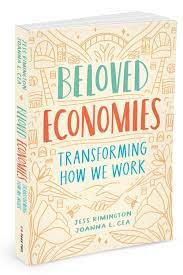 Have you ever read a book that continues to rearrange things in your mind long after you turn the last page? The book Beloved Economies by Jess Rimington and Joanna Levitt Cea is that book. It has challenged everything I know about work, about employee engagement, and even about the role of leadership. The core premise of the book is that the current economy, “in its lovelessness,” focuses on financial profits while compelling us to work in ways that make it harder for most of us to have the time, energy, or resources to be together in the ways that make life good. What’s more, it’s all by design—so why not set out to re-design it? That’s right, re-design…The goal of this book is to help transform the way we work. They make the distinction between innovating on what’s known and truly transforming or reimagining work. And that’s why, weeks after I read it, I can’t stop imagining what’s possible! Wait! How did we get here? The authors set historical context for several things we “take for granted” in many work settings in the U.S. They argue that, deeply embedded in the world of work, we find practices that reinforce the belief that everything operates best when controlled by a few. Moreover, seemingly innocuous practices such as spreadsheets to track inventory and calculations such as depreciation schedules can be traced back to the days of slavery and plantations in the U.S. south. Reimagining Work: Where do we start? In the book, the authors introduce concrete ways that people have successfully broken out of the mold from “business as usual” to a “Beloved Economy” workplace. They offer these ideas as inspiration and ask this question: If you work in a company where you trust your employees and treat them with respect, how would you design the systems differently? Although I know many of us feel that we are not in a position to reimagine our workplace, I challenge you to think of small changes that might have a large impact. Here are a few ideas that come to mind to get your brain going… Reimagine accountability. Our current practices of spreadsheets and status reporting can be over-emphasized in organizations where trust is low. What accountability measures do you put in place when you hire and work with highly competent, motivated people? Maybe in those environments, it’s not a focus on what you’re working on, it’s more about what should come off their plates or be reprioritized. The manager is coming from a place of support in helping others get the right work done, rather than a place of blame when things are not getting done. Reimagine career pathing. If you take a look at the “jobs” or “careers” tab on the websites of many large organizations, you’ll find reference to pre-defined career paths and tracks. But is it the responsibility of managers or an organization to lay out a career path for an employee? The underlying assumption is that the employee is not capable of determining their own path. Each person is unique in what they bring to the table and an organization may not even have a career path that would leverage a person’s potential. What if instead of the manager carving out the path, the manager learns to be an exceptional career coach? They can ask questions that will bring out the best in the employee so their strengths are being leveraged and identify the needs of the organization at the same time. Reimagine authority. In many organizations, the senior leaders make the critical decisions, especially when a project needs to pivot or change drastically. This then often causes a ripple effect down to the people who are working on the project day-to-day. Rarely do senior leaders engage with the “workers” to ask their opinion on changing the rate or scope of work. What would it look like if the people engaged in the day-to-day were asked their opinions on how to handle major changes to the scope of a project? Imagine if you were considerate of the impact the change has on everyone involved and create a forum where people could voice their opinions before announcing a big change in the project? Reimagine relationships. We often hear in organizations how important it is to build a network and maintain relationships, but it’s often for the purpose of gaining something in the end. In other words, there is a means to an end. In Beloved Economies, people build relationships because they genuinely care and are curious about another person. What would happen if you took someone out to lunch or had a quick virtual coffee with someone in your organization whom you don’t work with, and have nothing to gain from? Perhaps you take out a new employee for coffee, even if they will never intersect with your work. Or, perhaps connect with an employee outside of work who may live close by but your roles would rarely have a reason to connect. What else could you gain from building new relationships? Maybe it’s simply a good laugh, or a mental break, a moment of pause, or a joyful celebration. Think of ways to connect for the sake of being human, not necessarily for productivity. Check out the portal for notes on this eye-opening book, and let me know what ideas this discussion sparks for you.  As a coach and organization development consultant, I spend many days facilitating group discussions with people who have never met and/or who don’t know each other well. Often one of the goals of the sessions is to help accelerate relationship-building, and icebreakers are an important tool to meet that goal. But I hate the cheesy ice breakers! I am always listening for good questions and, like many facilitators, am a collector of them. I thought it would be fun to share some, and after decades of facilitating group discussions, to give you insights into my criteria for what makes for a good icebreaker question. And, they’re not just for the workplace. Try them out during the holidays with family and friends, too! What Makes for a Great Icebreaker Question? The best questions…
Icebreakers to Try with Family, Friends & Coworkers Should you feel inspired, here are a few that check all the boxes and will set you up for success!
What is a Diving-Board Moment, anyway?The last one on the diving-board moment is a fun one I picked up from this article, and it requires a bit of explanation. Here’s how to set it up…
Imagine we are making a documentary about your life: What is the opening scene? Think of a pivotal moment in your life and describe it. For example, when actor Reese Witherspoon asked Wharton Business School professor Adam Grant what the opening scene in his documentary would be, he said he’d be a teenager, standing at the top of the high-dive, trembling. Grant had been a competitive swimmer for much of his youth, yet the high dive was scary. Today, he is the author of best-selling business books on the psychology of leadership, a wildly successful podcast, and numerous resources to help leaders thrive. As he tells the diving-board story, you can imagine where he got the determination and self-discipline to push his limits and conquer mind over matter. As you think about your diving-board moment, the ideal story will take us to a real moment in your life when you overcame odds, realized something about your strengths, or defined for yourself an important core value. Fun question, huh? What are some of your favorite ice breaker questions? Remember how we started the pandemic nearly three years ago with so much uncertainty? If I had to draw a cartoon of myself in the spring of 2020, I'd be sitting under a mountain of used Clorox wipes asking a series of never-ending ‘what if’ questions! And at the same time, those of us who wanted to be forward-thinking and strategic were determined to look ahead and make sense of the mess (no offense, past-self, I know you were doing your best!). At some point I lifted my head up from the sewing machine where I was making cloth face masks and asked, “How do we want to emerge from this pandemic?” It was a noble question. The years that followed have provided us with some answers, but many of us are still stitching it together. So how do we want to emerge? I can throw around some buzz words like “resilient,” but to be honest I am jumping to a more practical thought: I’d like to hold onto the best “innovations” of the pandemic while learning from the others. And speaking of buzz words, fast-forward to April 2021, Adam Grant’s NYT article made us all feel seen. He gave us the vocabulary that described what many of us had been feeling in the first year or so of COVID-19. It was not burnout, it was not depression, it was not grief—it was “languishing.” The opposite of languishing? Flourishing. For many, the period of “languishing” was over a year ago, but how exactly do we get to flourishing?I know it’s a controversial topic, but I think a big part of the solution, and the transition to the “flourishing” phase, is in continuing to work remotely. I have been working remotely for the past decade, and it was not until the forced shut-downs in 2020 that many others began to do so. Many of my clients struggled with the transition, and many organizations were impatient to bring people back to the (physical) office as soon as they could do so safely. Why the rush? “We’re losing something,” many clients would say. When pressed, they’d express concerns about losing engagement and even an eroding organizational culture. This episode of Freakonomics Radio on “The Unintended Consequences of Working from Home” spotlights the impact of hybrid/flexible work. Currently, about 15% of U.S. workers are fully remote, and 30% are hybrid. The research presented in the podcast shows that the flex or hybrid model seems to boost employee happiness and productivity. Yes, BOOST. Yet, many of our clients are still tweaking the policy and/or dealing with resistance as a result of the move back to the office. No surprise – this discussion came up at our CliffsNotes Book Club meeting this month. Cate Rodman presented highlights from the book Human Kind: A Hopeful History, by Rutger Bregman. (For Cate’s notes, check out the Cliffs Notes Book Club portal.) As the title suggests, the book provides the history of humans from the standpoint of how we are social beings, how we have evolved to be collaborative, and how increasingly rely on technology to do so. While it is not focused on the present-day work-from-home era, the discussion certainly got me thinking about it. Specifically, the challenges that surfaced are
To me, getting a handle on those challenges will get us closer to flourishing. I know a lot of people are grappling with this, and as such I will share some tips that work for me and some of my clients. Tips for how to make the most of working remotely
What would you add to the list? What’s missing to help you get to a point where you are truly “flourishing,” pandemic or not? Any time people get together there is bound to be conflict. Yet we are living at a time when society is divided, and many people lack the skill needed to handle conflict head on—and with respect for all involved. At the CliffsNotes Book Club this month, we discussed Amanda Ripley’s book, High Conflict: Why We Get Trapped and How We Get Out. In the book, Ripley distinguishes between ‘high conflict,’ which is divisive and charged, and ‘healthy conflict,’ which is useful, curiosity-driven, and can lead to deeper understanding. She also talks about the factors that ‘accelerate’ conflict, one of which is identity. Identity is a complex, layered concept. I am a woman, a mother, a wife, an entrepreneur, a soccer-mom…I could go on and on. And each of my ‘labels’ connects me to groups of others. It’s similar in the workplace. We are not just part of a work team (i.e., our ‘seat’ in the org chart), we are connected to many groups. I could be a new hire and ‘in’ with a group of employees who started with me. I could be at headquarters and identify with people who are co-located more so than I do with employees at the smaller, regional offices. I also might identify with my generation or alumni group. I mention this because identity unites and divides. It shapes our worldview and contributes to bias. As Ripley discusses, group identities give us structure, fill us with pride, and encourage peace. At the same time, they can ignite or exacerbate conflict. As I often teach in my diversity courses, it’s not about eliminating your biases, it’s about bringing them to a conscious state so you know when they’re working for you—and, potentially, against you. When you do find yourself faced in an ‘us vs. them’ situation, pause and acknowledge what biases might be getting in the way. The book provides a question set to help shift to a curious mindset and move through conflict. The questions below are essential for any leader to have in their toolkit. Questions to increase your curiosity1. What is oversimplified about this conflict?
2. What do you want to understand about the other side? 3. What do you want the other side to understand about you? 4. What would it feel like if you woke up and this problem was solved? 5. What’s the question nobody’s asking? 6. What do you want to know about this controversy that you don’t already know? 7. Where do you feel torn? 8. Tell me more. What questions would you add to the list? 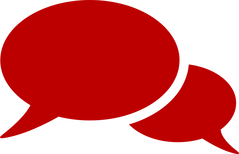 If I say the phrase, “Use your words,” you probably immediately picture a young parent and an upset toddler. I know I said it often when my boys were young, as we tried to empower them to name whatever it was that was troubling them. The rationale is that, putting a label to an emotion accesses rational thinking, which in turn can create calm. Fast forward a few years, the notion of learning to properly label your feelings was the central topic of our CliffsNotes Book Club discussion last month! However, this time it was a much more nuanced discussion of all the gradations of emotions, in all the Pantone varieties possible.  Atlas of the Heart Brené Brown’s latest book, Atlas of the Heart: Mapping Meaningful Connection and the Language of Human Experience, is a resource to help us access the language we need to better understand our feelings. Every feeling. In the book, she pries apart emotions that are sometimes confused such as jealousy and envy, and helps us distinguish and separate the terms. Whether you’re three or thirty, the words we use every day help us make sense of the world around us. When it comes to naming an emotion, having access to a specific term to name a feeling means having the ability to move through it. What Brown tells us is that, when we don’t notice or appreciate the differences between envy and jealousy, or joy and awe, we miss an opportunity to learn about ourselves and to connect with others. But What’s Happening in the Brain? Of course there’s brain science behind it. When you label a feeling, you are accessing the rational side of your brain. Labeling helps you re-gain control. You’re shifting away from the emotional reaction and toward the thinking reaction. This is particularly helpful in times of anguish or anger, but it can be useful to build self-awareness of any situation. This Mindful.org article by Mitch Abblett speaks to the neuroscience and provides context for the original research. From the article, “Matthew Lieberman refers to this as ‘affect labeling’ and his fMRI brain scan research shows that this labeling of emotion appears to decrease activity in the brain’s emotional centers, including the amygdala.” A Simple Application A simple action you can take is to prompt others to help them label their own emotions. If a colleague at work or friend outside of work comes to you with a challenge, try taking a guess at what they might be feeling. You may say, “What you’re describing to me sounds like [insert emotion]. Is that how you would describe it?” The best part of this strategy is that it does not matter if you’re right or not. By simply offering one possible emotion, you offer a starting point that helps the person clarify what they’re experiencing and helps them get closer to an accurate label for the emotion. They can then talk through what it might be, and that can make all the difference.  In my previous post, I talked about dynamic leadership and why it is important, considering the ever-changing environment and the increasingly complex issues that today’s leaders face. We, at MCG, also believe that to become a better, more impactful leader, one has to commit to continuous and consistent development. MCG’s leadership philosophy is based on the premise that leadership is an ongoing cycle of awareness, insight, and action. It is a journey and not a destination. So, how can you, as a leader, make your journey a meaningful one? Practice awareness First, you need to build a deep self-awareness, which is the foundation of leadership. It is essential for self-control, decision-making, creativity, learning, growth, and self-fulfillment. Also, learning how to understand the people around you is essential. Awareness of others enables you to consider the perspectives of your team members and apply that understanding in interactions with them. Finally, you must be constantly aware of the context – environment and the system in which you work – and adapt your behavior to what the situation requires. Gain insight on new knowledge, information, and perspectives Further along on your leadership journey, when you see the results of your behavior and decisions, it’s essential to analyze them and gain insight into how your own or your team’s behaviors impact others. Act by applying new behaviors immediately If you realize you made a mistake, take action to recover and improve. Inevitably, you’ll be faced with situations you’ve never been in before, and so you’ll need to apply a new behavior or skillset. Moreover, a pre-set destination may change at any time. Occasional detours and going off track will happen. What’s crucial is to be able to recognize those missteps early and do a course correction. There is nothing wrong with being an imperfect leader as long as you’re continually learning and growing. Let your team guide you along the way. You just have to be open to hearing the feedback and experimenting with new behaviors. Wash, rinse, and repeat There is no end game. Being mindful and intentional about your leadership is never ending and sometimes, you need to hit the reset button several times in one day. Know that it’s a process and learn how to recover gracefully when things get tough. What techniques or strategies do you use to keep yourself on track as a leader?  As the world around you keeps changing, perhaps it’s time to rethink your leadership approach and style. If you’re still relying on old leadership techniques, how effective and relevant do you think they are? In the not-so-distant past, leadership was viewed as a static phenomenon. It was often closely associated with a fixed leadership style, a certain set of behaviors, and skills that could (and should) be honed to perfection. Even today, we witness emerging leadership approaches with set-in-stone criteria for good leadership. Such approaches are based on the underlying assumption that there is the right way to lead, which might look convincing on paper. In reality, given the fast-paced work environments and the myriad of complex situations they face, leaders cannot address the challenges with a single approach to leadership, no matter which leadership theory it is backed up by. To be able to navigate the challenges and shift along with the environments, leaders must be constantly aware of themselves, the people around them, and the system in which they work. With continual awareness of self, others, and situations, leaders must develop multiple skillsets and move between them dynamically and fluidly based on the needs of the environment. Another common assumption underlying conventional leadership approaches is that leaders should aim for perfection. I find that striving for excellence may be counterproductive and result in situations when leaders become risk-averse, compliant, and highly stressed. Instead of teaching leaders to strive for perfection, we teach course correction. In other words, we assume techniques and approaches don’t always work. We teach leaders to be resilient and stay solution-focused when (not if) they go off-track. Finally, it’s important to shift from an “either-or” to a “both-and” thinking. For example, I believe that a leader can be both directive and collaborative, and both approaches have upsides and downsides. All in all, MCG’s philosophy is built around the idea that the dynamic approach to leadership allows leaders to find the right balance and learn how to surf the waves of change, unpredictability, and ambiguity. What leadership approach resonates with you the most? |
AuthorLaura Mendelow |
|
|
©2020. All Rights Reserved. Mendelow Consulting Group, LLC.





